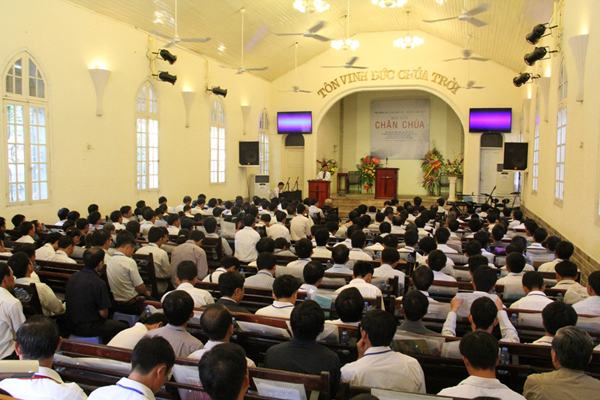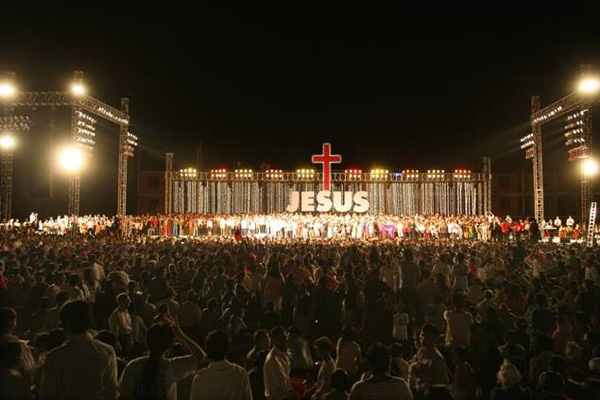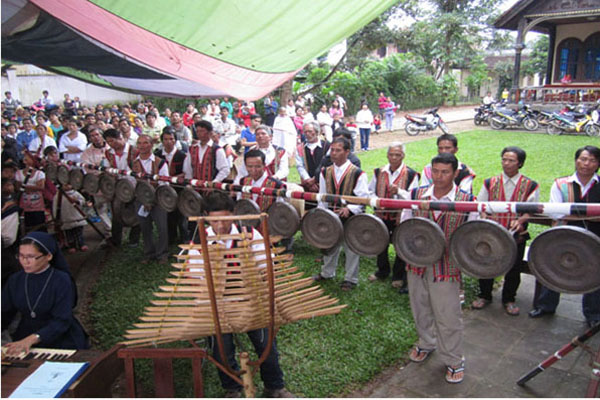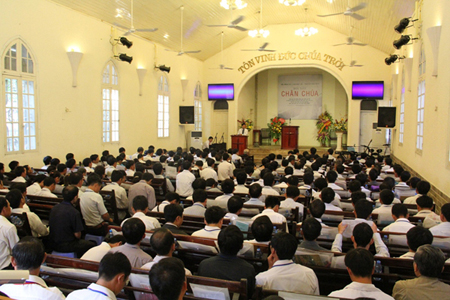The Northern Highlands is comprised of the former Northwest provinces (including Lai Chau, Dien Bien, Son La, Hoa Binh, Lao Cai and Yen Bai), former Northeast provinces (including Cao Bang, Bac Can, Lang Son, Ha Giang, Tuyen Quang and Thai Nguyen) and...
The Northern Highlands is comprised of the former Northwest provinces (including Lai Chau, Dien Bien, Son La, Hoa Binh, Lao Cai and Yen Bai), former Northeast provinces (including Cao Bang, Bac Can, Lang Son, Ha Giang, Tuyen Quang and Thai Nguyen) and Western provinces (including Thanh Hoa, Nghe An and Ha Tinh). The Northern Highlands is home to more than thirty ethnic minorities with the major language groups as follows: Viet- Muong (spoken by the Kinh, Muong, Tho and Chut), Tay-Thai (spoken by the Tay, Thai, Nung, San Chay, Giay, Lao, Lu and Bo Y), Tang-Mien (spoken by the Ha Nhi, La Hu, Phu La, Lo Lo, Cong and Si La), Han (spoken by the Hoa, Ngai and San Diu), and Ka-dai (spoken by the Co Lao, La Chi, La Ha and Pu Peo). There were approximately 5.2 million ethnic people in the Northern Highlands in 2005. The ethnic minority groups with sizeable populations include the Tay (1,447,514 people), Thai (1,328,725 people), Muong (1,137,515 people), Nung (856,412 people), H'mong (787,604 people) and Dao (620,538 people).
Before the introduction of foreign religions such as Catholicism, Protestantism and Buddhism, the ethnic groups in the Northern Highlands, like those in the Central Highlands, traditionally worshiped their ancestors and practiced polytheism with the belief that everything had a soul.

In the early 1930s, after becoming the leader of the Vietnam Protestant Sect, Pastor Le Van Thai spread Protestantism to distant places such as Lang Son, Lao Cai, Hoa Binh, Son La and Lai Chau. According to him, a small group of Muong people were converted to Protestantism in 1932 (but their exact number and location were not identified). In 1935, a number of Protestant followers were also found in Son La and Lai Chau. In Son La alone, a Protestant society was founded among the Thai. A small number of H'mong people were found to be converted to Protestantism in Sa Pa. However, most of these early Protestant foundations no longer exist. The only existing one nowadays is that of the Dao people in Bac Son (Lang Son). It is considered the biggest sect of the Vietnam General Confederation of Evangelical Churches (Northern Region). The Protestant community among the Dao people was established for quite a special reason. Between 1937 and 1938, in Loc Binh (Lang Son), there was a man named Nghin, a Tay person, who titled himself as the Dao king and forced the Dao people to serve him. In 1939, some of his valets met Protestant missionaries in Lang Son and began to follow Protestantism. Ever since 1940, Protestant missionaries in Vietnam were sent to the Northern Highlands to develop a Protestant foundation there. The first destination of those missionaries was Lan Ca Village, Tran Yen Commune. From Lan Ca, Protestantism was expanded to the villages of Pa O and Dac. Within a year, the number of Protestant followers in Tran Yen Commune was in the double digits. In 1942, some of them were sent to Lang Son Town for further training to prepare for the establishment of an independent and self-supporting Protestant society. Shortly after that, the Bac Son Protestant Sect was set up with a managing committee of seven members and Dang Duc Long as the leader. During the 1950s and 1960s, the Bac Son Protestant Sect weakened due to the lack of leadership and the infiltration of worship customs and amulets. It was not until the early 1970s that it was restored thanks to its direct contact with the Vietnam General Confederation of Evangelical Churches (Northern Region) and regular participation in the church congresses. In 2003, the Bac Son Protestant Sect had a total of 1,305 followers located in nine villages of the four communes of Bac Son, 510 of which were baptized.
In the Northern Highlands, for the last twenty years, Protestantism (earlier known as Vang Chu and Thin Hung) was spread to H'mong and Dao groups. This process of development was divided into the two following stages:
From 1986 to 1990, a number of H'mong people had opportunities to listen to Protestant lectures broadcast in H'mong by the FEBC Radio from Manila, the Philippines. Vang Chu made its first appearance in Ha Giang Province in 1986. Later, in 1987, it was found in some places of Song Ma District (Son La Province) and several highland communes in the districts of Dien Bien, Tuan Giao, Sin Ho, Muong Te and Phong Tho (old Lai Chau). By 1990, it had been introduced in 164 communes in eight provinces of the Central Highlands where the H'mong lived. These provinces included Tuyen Quang, Ha Giang, Cao Bang, Bac Thai (present-day Bac Can and Thai Nguyen), Son La, Lai Chau (present-day Lai Chau and Dien Bien), Lao Cai and Yen Bai.
The evangelization of Protestantism in this period was carried out secretly, mainly through the FEBC broadcasts and the inducement of the local H'mong people. Protestantism had not shown its nature clearly in this period, so it was called Vang Chu (God as the King of the Heaven in the H'mong language).
During 1991-1992, some leaders of Vang Chu foundations contacted Catholic churches in Yen Bai, Tuyen Quang, Ha Tay, Bac Ninh and Vietnam. There, they were given instructions on the Catholic doctrine and rituals and were provided with books on the Bible. As a result, most of Vang Chu believers were eventually converted to Catholicism.
However, after years of following Catholicism, they found out differences between the Catholic creeds and what they had heard from the FEBC broadcasts and their books on the Bible, Besides, they were guided by the FEBC Radio to contact the Vietnam General Confederation of Evangelical Churches (Northern Region) at number 2 Ngo Tram Street, Vietnam. After that, they were instructed and taught how to practice Protestantism by the missionaries here. Consequently, the former Vang Chu followers finally converted from Catholicism to Protestantism.
Since 1943, the number of Protestant followers in the Northern Highlands has increased dramatically. The leaders of Protestant foundations frequently visited the Vietnam General Confederation of Evangelical Churches (Northern Region) for basic instructions on the doctrine and rituals and the provision of prayer materials and financial aid. On returning home, they distributed the materials and give the locals instructions on how to practice Protestantism. By 1994, the number of Protestant followers in the Central Highlands came to approximately forty thousand.

From 1995 to the present day, Protestantism has not been restricted to the H'mong and Dao but has spread to many other ethnic minority groups such as the San Chi, Pa Then, Ha Nhi, Mang, Co Lao and La Hu.
Together with the increase in the number of its followers and the extension of its area of operation, Protestantism in the Northern Highlands has gradually formed its model of organization. With the close relationship with the Vietnam General Confederation of Evangelical Churches (Northern Region), the Protestant foundations in this region have gradually established their managing committees. For the last few years, apart from the Vietnam General Confederation of Evangelical Churches (Northern Region), several Protestant sects which are headquartered in Ho Chi Minh City have extended their activities to this region. They include the Christian Fellowship Church, the Baptist Church, Pentecostals, the Christian Mission and Presbyterians.
By 2005, the number of Protestant followers among the ethnic minorities in the Northern Highlands had amounted to 101,889 people. This figure excluded about 33 thousand Protestant followers who had moved freely to the Central Highlands and a small number to Laos and China.
When it was first introduced into the ethnic minority groups in the Northern Highlands, Protestantism brought along a new lifestyle which was different from the traditional practices and customs. Particularly, the Protestant followers still kept an extremist attitude toward the beliefs and customs which had been preserved for generations by the local people, especially the H'mong. Consequently, the villages where Protestantism was evangelized often witnessed cultural conflicts between the Protestant culture and lifestyle and the local cultures and beliefs. In some places, the contradiction between the followers and non-followers was so severe that the local authorities had to intervene.

When Protestantism was first introduced into the ethnic minority areas in the Northern Highlands, it caused negative social phenomena such as the free migration and the destruction of production. Later, these negative impacts gradually decreased while positive effects, especially those in morality and lifestyle, gradually increased. For example, the locals learned to abolish backward customs in wedding and funeral, practice monogamy, give up drinking wine and smoking and obey State policies and laws.
Protestantism has gained a rapid development in recent times, and the people in many places have followed it just because of impulsive factors or material encouragements. Despite these, Protestantism has become an entity in the areas of the H'mong and some other ethnic minority groups in the Northern Highlands. Particularly, most of Protestant followers in this region have built up faith in and feelings for this religion, considered it an indispensable mental support, and formulated the needs for regular religious activities. Since the Vietnamese Prime Minister issued the Directive 1 (2005) on several Protestantism-related tasks, hundreds of village-based Protestant groups in the Northern Highlands have registered with the local authorities, gradually normalizing their religious activities.



